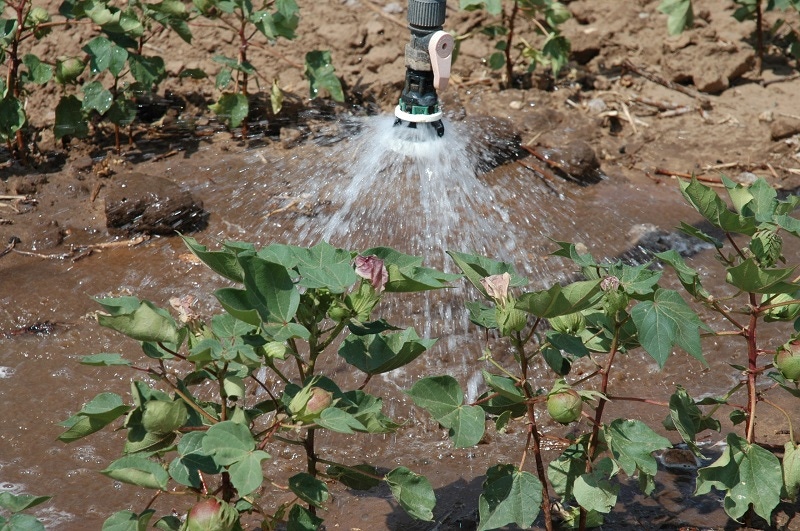
Exponential economic and population growth over the next 25 years will turn Texas into the biggest population center and largest economic base of any state in the nation, surpassing California by the year 2040 and potentially tripling in size over the next 60 years according to some estimates.
Those numbers were supported by a report offered by Texas A&M Executive Director of the Water Resources Institute, Dr. John Tracy, who addressed participants during a session at the South Texas Farm and Ranch Show in Victoria in late October.
Tracy discussed water use and water supply and demand in Texas, and how that involves and will affect agriculture in the years ahead. He also addressed current water issues and concerns, including the U.S. Environmental protection Agency's (EPA) Waters of the United States (WOTUS) rule and other national and state policies, including the Texas Water Plan.
While the concerns over EPA's WOTUS rule have run high over the last year or so, federal court action and a re-evaluation of the rule by both the Army Corp of Engineers and EPA have better qualified the impact of the issue on agriculture. The rule has been highly contentious, causing many farmers and ranchers to voice concerns about government overreach, but much of the fear over the impact has died down to some degree, he said.
WOTUS
"I don't want to dismiss the issue as having little impact to agriculture, but I would phrase the issue as having less impact overall on the water bodies listed under the redefined terms of the rule. But for those who will be impacted, the effect will feel big," Tracy said. "On average, the impact will be less than we initially feared because the rule remains stuck in a legal gridlock, and it's not going anywhere fast and not without a great deal of scrutiny in the near future."
Texas agriculture faces greater concerns, he warned, chief among them being a changing climate and a growing demand for water at a rate that exceeds water recharge and recovery across the state. Also of concern, Tracy says, is the effect the Endangered Species Act may have for Texas farmers and ranchers, especially related to the protection of various species of freshwater mussels found in many of the rivers and tributaries of Texas.
These mussels could be included in the federal list of endangered species, which, if comes to pass, would put the burden of management on the state, which would have to come up with plans to make certain enough water of appropriate quality is available to help sustain the mussel population.
The listings could affect portions of the Rio Grande, Brazos, Lower Colorado and Guadalupe-San Marcos River basins.
For the latest on southwest agriculture, please check out Southwest Farm Press Daily and receive the latest news right to your inbox.
Tracy says the authorities that manage the rivers where the mussels are found will have to consider the listings in their water management programs. The wildlife listings could change the authorities' ability to divert water during certain times of the year, and farmers and ranchers will have to navigate the new rules concerning what they can take out and what they can put into the rivers.
"This is not a listing for aesthetic purposes," Tracy said. "These mussels are important parts of the ecosystem that affect all sorts of other uses of the rivers."
WATER RIGHTS ISSUE
Of greater concern perhaps is the broadening gap between water that is available and the growing water demands of the state. Agriculture and municipalities represent the largest segments for water use—a trend that is expected to continue. Population growth over the next 60 years will center on Texas' urban areas. Currently, Texas has five of the eleven fastest growing cities in the nation. While agriculture has made strides in reducing its water signature, cities have little hope of reducing usage caused by population growth, and are expected to increase significantly the gap of water supply versus demand.
The results will increase emphasis on water conservation in the years ahead, but Tracy says agriculture has already developed extensive conservation measures. The best hope for less water use across the industry will be producing higher yielding crops on less land. Thanks to research and science, that trend has already helped to reduce water usage, and he says more technological advances are expected in the future.
In spite of agriculture's reduction in water usage however, in 40 to 60 years the gap between water demand and availability will grow and is expected to create a 17 percent to 30 percent disparity between what is required and what is available. Such expectations dictate that not only agriculture but all industry and private water users will need to adopt greater conservation efforts in order to create a better balance. And the task will be marked by additional challenges as a result of the changing climate.
With climatologists calling for the possibility of mega-droughts in the years ahead, water will remain one of the largest concerns in the state, indeed across the world.
"When it comes to climate change, we know and can reasonably project the changes that will take place in terms of a rise in temperatures. But estimating the effect climate change will have on water recovery and availability is much harder. It's one of those things where we do not know and pretty much have to make adjustments when it happens," Tracy said.
He warned there is little question that with a rise in temperature in the climate and the very real possibility of periods of extreme drought in our future, water resources are of great concern in the coming years, and agriculture will be one of the areas that will be affected the most.
About the Author(s)
You May Also Like




